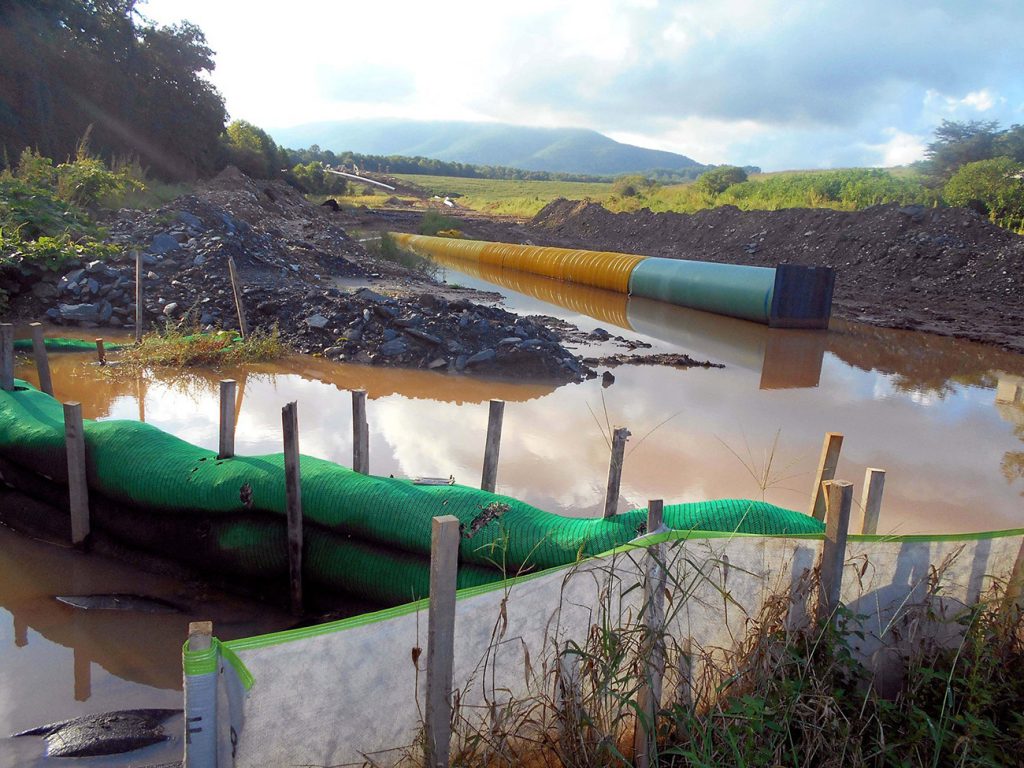Cleaning Up Coal Ash
For well over a century, power plants across the country have burned coal to generate electricity. And for just as long, leftover coal ash has been dumped in open, unlined pits near the power plant, usually located on a river or lake. Every year, U.S. power plants produce 130 million tons of coal ash, which is the second largest waste stream in the country after municipal garbage.
Coal ash concentrates the toxic heavy metals found in coal, including arsenic, mercury, lead and selenium. Stored in unlined, wet impoundments, coal ash has been leaking these toxics into our groundwater and surface waters for years. Sometimes these impoundments collapse — with disastrous results.
Yet government regulations for coal ash management are either non-existent or sparse, and there is little enforcement of the regulations that do exist. In North Carolina, this lack of oversight — and the complicity between state regulators, elected officials and Duke Energy — came to a boiling point in February 2014 when one of Duke’s coal ash impoundments spilled 39 million tons of ash into the Dan River.
Citizens living near North Carolina’s 33 coal ash impoundments — all of which have leaked — have fought for transparency from Duke and the state, and for cleanup of the pollution that threatens their property value, health and family. Their actions forced this issue into the headlines of news networks and to the forefront of environmental justice conversations in the United States.
Appalachian Voices stood with these communities as we worked for years to compel Duke Energy and the N.C. Department of Environmental Quality to excavate coal ash from all the North Carolina sites and dispose of it either in lined, dry landfills, away from waterways, or by recycling it for concrete or other uses, provided it’s done in a manner that protects public health and the environment.
On Jan. 2, 2020, North Carolina announced a historic settlement with one of the state’s most powerful corporations and polluters, Duke Energy. The settlement requires Duke to move nearly 80 million tons of toxic coal ash at six of its power plants to properly lined landfills onsite or recycle it.

Learn information about specific coal ash impoundments in the South, including health threats and safety ratings:
Additional Resources
Fact sheets, videos, links to academic research, and more
Sign Up to Act
Help us protect the health of our communities and waterways.
Latest News
Land Conserved Along Little South Fork of Cumberland River in Kentucky
More than 1,000 acres of land along Kentucky’s Little South Fork of the Cumberland River were placed under state protection in August.
Two-Headed Copperhead Found in Virginia
A Virginia resident found this two-headed snake in her yard in late September.
Expanding Our Vision & Deepening Our Impact
Appalachian Voices staff and board share our objectives for the next three years, which will advance our regional vision of a healthy environment and strong local economies that allow communities to thrive.
Black lung survivors take their case to Congress
Residents of Southwest Virginia went to Washington, D.C., to tell Congress about the plight of their neighbors, friends, family members and other coal miners with black lung disease.
Legal Challenges Against Pipelines Heat Up
Federal and state courts alike have partially halted the construction of fracked gas pipelines across the region as cases are decided and permits are reevaluated.
Mountain Valley Pipeline ordered to halt construction at stream crossings
Construction of the Mountain Valley Pipeline is now halted at nearly all stream crossings in West Virginia and Virginia, following a court ruling and an announcement from the Army Corps of Engineers.










